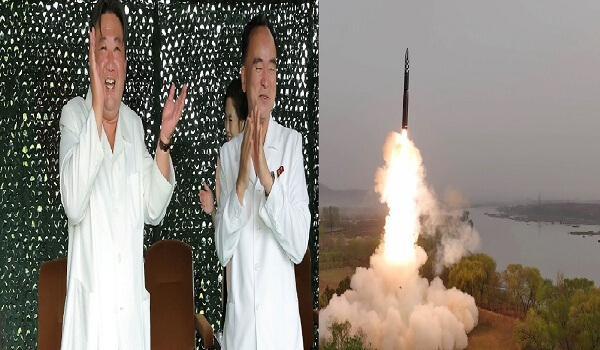North Korea successfully conducted the second launch of the Hwasong-18 intercontinental ballistic missile (ICBM). The Hwasong-18 intercontinental ballistic missile uses solid-fuel technology, which gives it the advantage of being launched with minimal preparation. According to the Korean Central News Agency, the Hwasong-18 was first tested in April. It is North Korea’s most powerful nuclear weapon. This test strengthens North Korea’s ‘nuclear war deterrence capability’. According to North Korea, the purpose of the launch was to confirm the technical reliability and operational reliability of the missile. The missile’s firepower is up to the US.
Intercontinental Ballistic Missile (ICBM)
- An Intercontinental Ballistic Missile (ICBM) is a surface-to-surface missile.
- They can kill at a long distance, that is, they have firepower from one continent to another.
- According to the Federation of American Scientists, an intercontinental ballistic missile (ICBM) has a minimum range of 5,500 km (3,400 mi), with a maximum range of 7,000 to 16,000 km.
- Agni-V is an Indian ICBM with a range of over 5,000 km.
- Countries that have ICBMs: India, Russia, United States, North Korea, China, Israel, United Kingdom and France.
Solid fuel technology
- Solid-fuel technology involves mixing a fuel and an oxidizer to create a propellant.
- Typically, metal powders such as aluminum act as fuel, while ammonium perchlorate, a salt derived from perchloric acid and ammonia, acts as an oxidizer.
- These components are combined, bound together by a strong rubber, and then packaged in a metal casing
- On ignition, the solid propellant combusts, causing the oxygen from the ammonium perchlorate to combine with the aluminium.
- This reaction produces a huge amount of energy and the temperature exceeds 5,000 °F (2,760 °C). The resulting trajectory lifts the missile off the launch pad, smoothing its trajectory.
Which countries have this technology
- The origins of solid-fuel technology can be traced back to ancient fireworks developed by the Chinese, but significant advances occurred in the mid-20th century when the United States developed more powerful propellants.
- North Korea has incorporated solid fuel into a range of smaller, shorter-range ballistic missiles.
- The Soviet Union launched its first solid-fuel ICBM, the RT-2, in the early 1970s.
- After this, France developed medium range ballistic missile S3 (SSBS).
- China began testing solid-fuel ICBMs in the late 1990s.
- South Korea also claims to have ‘skillful and advanced’ solid-propellant ballistic missile technology.

